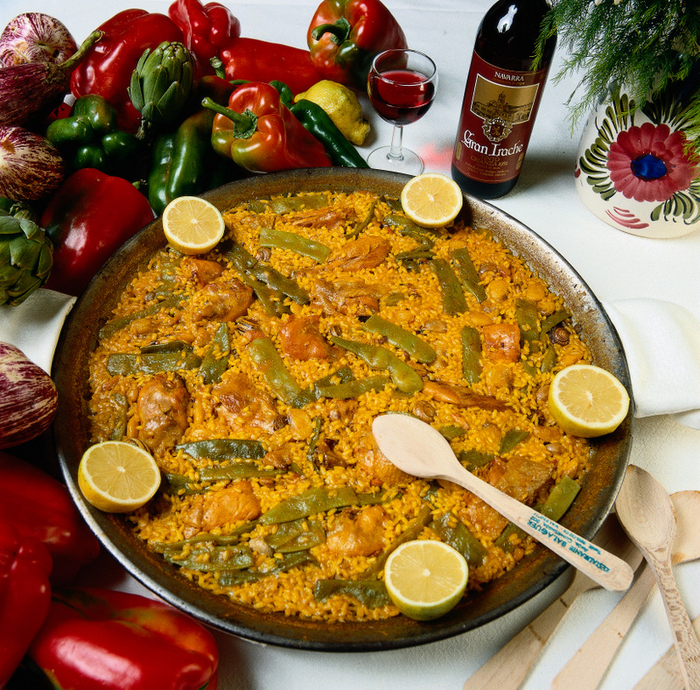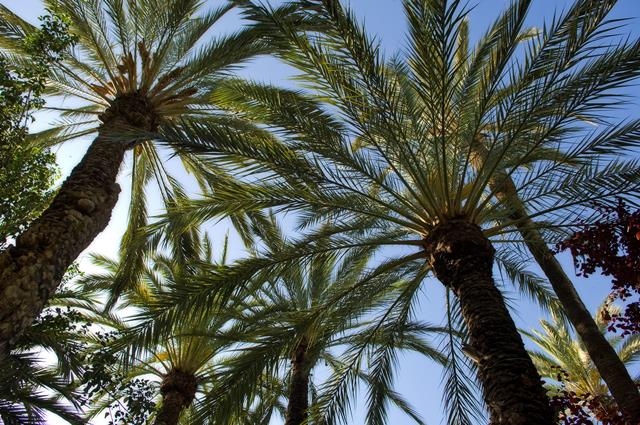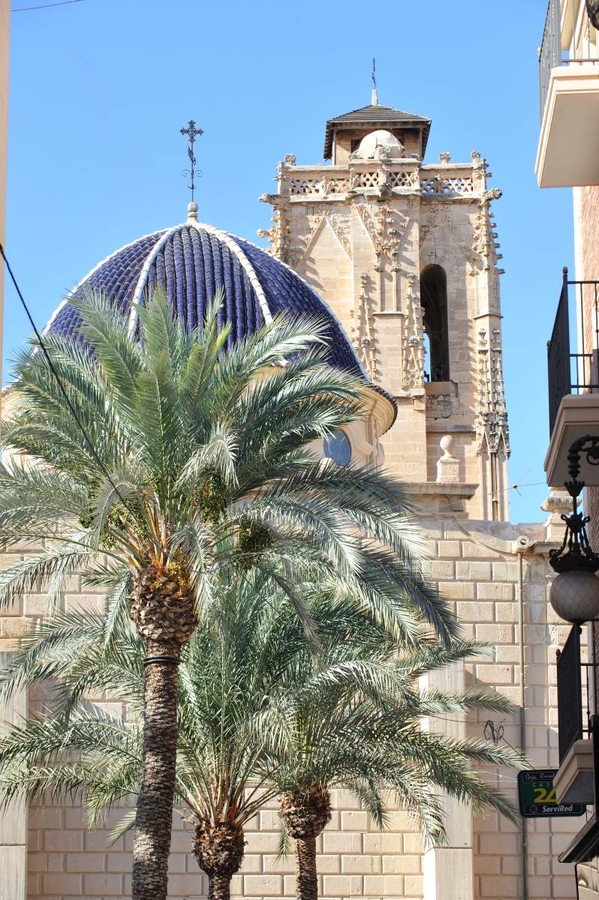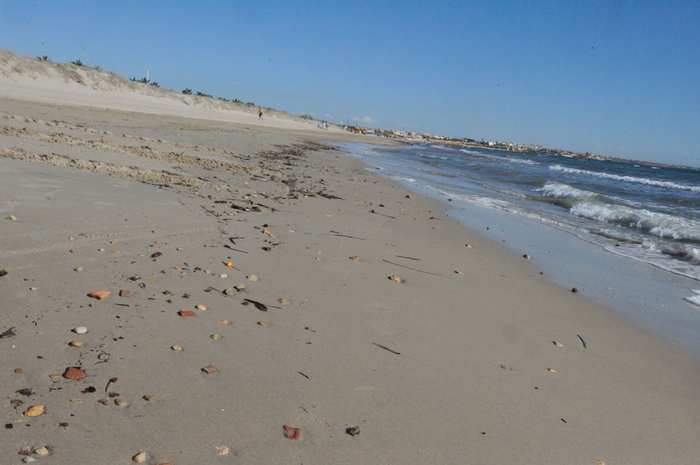Introduction to the Vega Baja
The vegetable garden of Orihuela joins with beaches, tourism, golf and culture in the Vega Baja
 The Vega Baja del Segura is the southernmost of the nine comarques within the province of Alicante, Region of Valencia, which form administrative sub-divisions consisting of groups of municipalities. In terms of population it is the third largest of the whole of the Comunidad Valenciana, behind only Valencia and Alicante, and is home to around 400,000 people.
The Vega Baja del Segura is the southernmost of the nine comarques within the province of Alicante, Region of Valencia, which form administrative sub-divisions consisting of groups of municipalities. In terms of population it is the third largest of the whole of the Comunidad Valenciana, behind only Valencia and Alicante, and is home to around 400,000 people.
Most of the area consists of the “vega”, or flood plain, of the River Segura, and as such it is predominantly flat, although there are some small mountains inland and in the area of Guardamar. This plain has been intensively farmed for many centuries, the fertile soil and warm, sunny climate providing ideal conditions for fruit and vegetable growers. The area is sometimes known as the “huerta” (market garden) of Orihuela and its products are exported all over Spain and the rest of Europe.
 Although the climate is largely what one would expect of a Mediterranean tourist coastal area, when the river occasionally floods in periods of heavy rain the consequences can be disastrous, and “gota fria” alerts are common, especially in the autumn.
Although the climate is largely what one would expect of a Mediterranean tourist coastal area, when the river occasionally floods in periods of heavy rain the consequences can be disastrous, and “gota fria” alerts are common, especially in the autumn.
For most of the time, though, the weather is warm and the sun shines, and this has fuelled the spectacular growth of both traditional and residential tourism in the last few decades. The local economies of most of the municipalities are dominated by the influx of visitors both for short stays in the summer and in residential developments all year round.
 Of course the coastal municipalities of Torrevieja, Guardamar del Segura, Orihuela and Pilar de la Horadada are dominated by tourism, but inland areas have also seen huge growth in recent times due to the easy access for visitors from abroad provided by the airports at Alicante and San Javier.
Of course the coastal municipalities of Torrevieja, Guardamar del Segura, Orihuela and Pilar de la Horadada are dominated by tourism, but inland areas have also seen huge growth in recent times due to the easy access for visitors from abroad provided by the airports at Alicante and San Javier.
In fact, although there are two official languages throughout the Comunidad Valenciana, here on the southern end of the Costa Blanca it seems at times that Spanish and Valenciano are spoken less than English and other European languages. The municipality of San Fulgencio has the highest proportion of non-Spaniards registered on the electoral roll in the whole of the country at over 77%, and in this area the population has grown from 1,500 to over 12,000 since 1996.
Of course the main reasons for people from northern Europe choosing to live in the Vega Baja are the beaches and the climate, and the attractions for many of them have been incremented by the golf courses in the area. There are long-established courses at Las Ramblas, Campoamor and Villamartín, as well as newer ones in Ciudad Quesada, Algorfa, Lo Romero and Las Colinas among others, and the courses of the Region of Murcia and the rest of Alicante are also within easy driving distance.
 Here in the Vega Baja the lifestyle also constitutes a major attraction for visitors from abroad. The fiestas in this part of Spain are lively, colourful and loud, whether they are celebrating Holy Week, San Juan or the “Moros y Cristianos” festivals which have their roots in the centuries of Moorish rule in the area. In fact the history of the comarque stretches back a lot further, and at different times over the past three millennia it has come under the influences of the Iberians, the Phoenicians, the Carthaginians, the Greeks, the Romans, the Visigoths and the Moors, before the Reconquista ousted the Moors in the Middle Ages.
Here in the Vega Baja the lifestyle also constitutes a major attraction for visitors from abroad. The fiestas in this part of Spain are lively, colourful and loud, whether they are celebrating Holy Week, San Juan or the “Moros y Cristianos” festivals which have their roots in the centuries of Moorish rule in the area. In fact the history of the comarque stretches back a lot further, and at different times over the past three millennia it has come under the influences of the Iberians, the Phoenicians, the Carthaginians, the Greeks, the Romans, the Visigoths and the Moors, before the Reconquista ousted the Moors in the Middle Ages.
The vestiges of these cultures can be seen throughout the Vega Baja: the Via Augusta which linked the Mediterranean coastline in the Roman era left a scattering of Roman villas and settlements, Moorish castles still dot elevated outcrops and the splendour of the baroque dominates the historic old quarter of Orihuela.
 This variety of different cultural influences has also influenced the gastronomy of the area. Its plentiful local produce, including seafood and fruit and vegetables, has become even more important to the regional economy since the ancient Moorish irrigation ditches were supplemented in the second half of the twentieth century by an increased water supply thanks to the canal from the river basin of the Tajo, further north, and local specialities include a variety of paellas and many sweet dishes. Nowhere is the famed “Mediterranean diet” more in evidence than in this part of the Spanish coastline.
This variety of different cultural influences has also influenced the gastronomy of the area. Its plentiful local produce, including seafood and fruit and vegetables, has become even more important to the regional economy since the ancient Moorish irrigation ditches were supplemented in the second half of the twentieth century by an increased water supply thanks to the canal from the river basin of the Tajo, further north, and local specialities include a variety of paellas and many sweet dishes. Nowhere is the famed “Mediterranean diet” more in evidence than in this part of the Spanish coastline.
The 27 municipalities belonging to the Vega Baja are Orihuela, Torrevieja, Pilar de la Horadada, Rojales, Almoradí, Callosa de Segura, Guardamar del Segura, San Fulgencio, Albatera, Catral, San Miguel de Salinas, Redován, Dolores, Cox, Bigastro, Benejúzar, Los Montesinos, Algorfa, Formentera del Segura, Rafal, Benijófar, Granja de Rocamora, Jacarilla, Daya Nueva, Benferri, San Isidro and Daya Vieja.


































